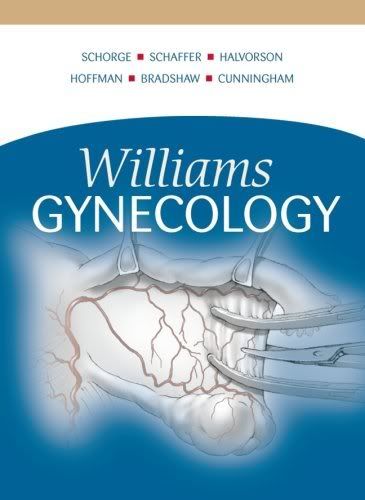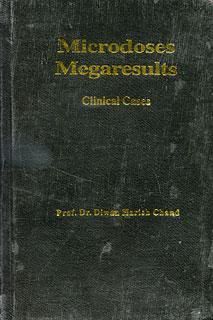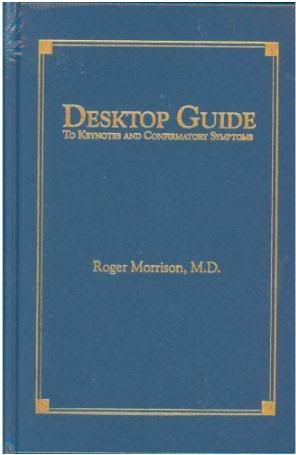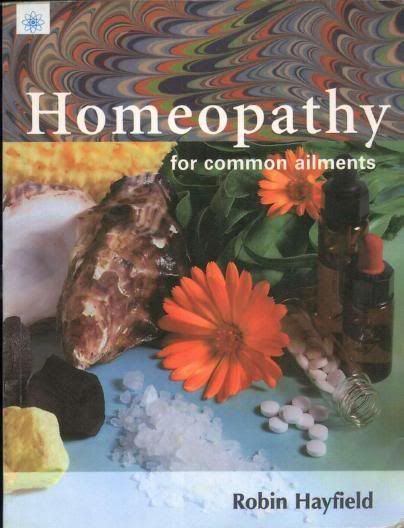(Samuel Hahnemann)
(10 April 1755[1] – 2 July 1843) The antiquity of ‘Organon of medicine is more than two hundred (1810 -2010) years. It came into the world as a provider of guideline Principle for the present, past and post medical sciences. It stemmed from correction and rectification.
It is a historical catastrophe or a great fiasco that a minority section of Homoeopathic system did not conceive or tired to have a “Relative Development” of the system as propounded by “Organon of medicine”.‘Their attitude may be voluntary or involuntary; however, it’s an impediment”.As any other science, Homoeopathy itself has to be adapted and adopted with the circumstances. It is relative (Notwithstanding the fact that the basic tenets cannot be changed)...!
“Fundamentalism is farce ... Homoeopathic methodology is not a never changing one in this ever changing world...!The different editions of ‘Organon of medicine was stemmed from this Philosophy Unfortunately, a few section turned a deaf ear to the ‘waking up call” given by Organon.This Article aims to correct the above-mentioned fundamentalists.
The basic nature of all fundamentalists is that they are adamant and reluctant.... They do not like to analyze ideas, customs followed (They rely on books kept in the stretched hand distance) and basic texts.They revel against all who try to make a mild variation in the existing customs.“Their prejudiced pet aversion prevents progress in any field...!”“Don’t forget that, arms and ammunitions here in are kept in the same camp...!”That is why a real friend is being considered as a real foe....
“Organon / Homoeopathic Bible....!!”
In some texts, (even in the internet, which is being considered as a vast ocean of knowledge) an epithet has been given to Organon.It is nothing but,“a Holy status.”Organon is being called as “Bible of Homoeopathy.”It is nonsensical and against all logics.As far as the case of a devotee is concerned,a ‘Holy text’ is eternal. Nevertheless Organon itself came through various changes, Subjected to various adding.Organon is not an end in itself....
It is a historical catastrophe that the Pioneers and Path makers like Dr. Kent didn’t get acquainted with the sixth edition, which entered into the arena of Homoeopathy in 1921.Really, it is an ill omen as far as the case of Dr. Kent is concerned. Nevertheless the tragic tragedy is that the Present generation it is being fastened to the fourth edition....Since the Publication of the sixth edition in 1921 till now, fundamentalists do not change their attitude. This nostalgia is pathetic and pathogenic............This Article tries to follow the best and developed of all available; “The 6th edition.”
Scientific approach
The vestige of Dr. Hahneman in the medical science is characterized by
empiricism*. He made medical science to be practical (Drug Proving and clinical experiment) and he tried to lift it from abysmal darkness.He considered Homoeopathy as an empirical science. This is clear, when we go through his words;“I believe in experience, more than my own intelligence (Chr. DIs Vol-I, Page-XV).Dr. Hahnemann’s above-mentioned view is being corroborated by the title given to one of his first thesis. He himself called his thesis as “medicine of Experience.”
Nevertheless the fundamentalists are blind enough to reject the above mentioned view. They are in the “labyrinth of Theory”.“The philosophers have only interpreted the world in various ways; the point is to change it..”This is an oft quoted lines of Karl Marx, explaining the necessity of Practical wisdom. He categorically stated that Philosophy should be based on practice.
Dr. Hahnemann before Karl Marx took the same stance .(Ref: aph: 1 footnote) Yet the fundamentalists follow dogmatism and trying to keep or protect a philosophy which is far away from practice.“Pedantry rooted in academic lip-service will never charge anything ...!”.Dr. Hahnemann Precedes Dr. Karl Marx in socialism too... (Ref: aph: 271).
Single dose
The impact of Prejudice caused by the 4th edition may or may not be the cause of incomplete reading of 6th edition,by all most all Seminar Pandits. They have put a full stop abinitio...!.That is why the fundamentalists are keeping a blind view about repetition.We may be miss-led, if we are content with peripheral reading of Aphorisms. We may think that Dr. Hahnemann took a stand against repetition when we read early portions of Aph: 246, which are dealing with repetition. Let us have a glimpse at Hahnemann’s own words;
Every perceptibly progressive and strikingly increasing amelioration during treatment is a condition which, as long as it lasts, completely precludes every repetition of the administration of any medicine whatsoever, because all the good the medicine taken continues to effect is now hastening towards its completion. This is not infrequently the cause in acute diseases, but in more chronic diseases, on the other hand, a single dose of an appropriately selected homœopathic remedy will at times complete even with but slowly progressive improvement and give the help which such a remedy in such a case can accomplish naturally within 40, 50, 60, 100 days. This is, however, but rarely the case; and besides, it must be a matter of great importance to the physician as well as to the patient that were it possible, this period should be diminished to one-half, one-quarter, and even still less, so that a much more rapid cure might be obtained. And this may be very happily affected, as recent and oft-repeated observations have taught me under the following conditions: firstly, if the medicine selected with the utmost care was perfectly homœopathic; secondly, if it is highly poetized, dissolved in water and given in proper small dose that experience has taught as the most suitable in definite intervals for the quickest accomplishment of the cure but with the precaution, that the degree of every dose deviate somewhat from the preceding and following in order that the vital principle which is to be altered to a similar medicinal disease be not aroused to untoward reactions and revolt as is always the case 1 with unmodified and especially rapidly repeated doses.
When we go through Dr. Hahnemann’s words, it is being revealed that definite and speedy cure needs repetition.Subsequently Aph. 248 advises repetition of medicine, even though it is a ‘Deep acting one.”“May be one dose per day in chronic cases or more than one dose in an hour in acute cases”..
For this purpose, we potentize anew the medicinal solution (with perhaps 8,10,12 successions) from which give the patient one or (increasingly) several teaspoonful doses, in long lasting diseases daily or every second day, in acute diseases every two to six hours and in very urgent cases every hour or oftener. Thus in chronic diseases, every correctly chosen homeopathic medicine, even those whose action is of long duration, may be repeated daily for months with ever increasing success. (aph:248)...
Long and continued observation and Experiments of Dr. Hahnemann proved that repetition is inevitable.That was why he developed L.M. Potency and revealed it through the 6th edition to the world.
All most all seminar masters feign that they are adept in treatment (even though it is fatal) with single dose and single medicine, (Such a genus can be traced in Kerala). If such a miracle had had been taken place, whole India would have been overwhelmed by Homoeopathy .......!!
The fourth edition fixes the 30th potency.
“It is ironical to think that, this master doesn’t know the subsequent changes in the following editions...!” Is the above-mentioned patient is free from the clutches of all toxic substances entered into his body through his food?
Won’t they respond?
Fundamentalist version is that the applying of single dose of miasmatic constitutional medicine is enough to eliminate all the toxins from the human body...!
‘Due this false concept almost all seminar masters eat food containing steroid.
“They way you cook... the way you look ...”
”Aaharum hithamoushadam” (Balanced food itself is a genuine medicine) this is the one of the accepted Principles of Ayurveda. Aph. 259 clearly states about Diet and regimen.
What about the emotional outbursts (The departure or demise of beloved or Socio-Political) taken place in different periods in the above said patients?Those who are subjected to genetic miasmatic constitutional medicine are capable to ignore or disregard these in an ascetic way!!!???.(BUT Unfortunately Pandits are hypersensitive and are being agitated by trifle. They engage in every type of business such as software commission, London PG that is against medical ethics.)
Lust for wealth is a disease:There is a rubric for THIS in the Synthesis Repertory(. usurer)
Single medicine
Aph. 273 Prescribes one medicine at one time. Neverthless perverted fundamentalist version is “one medicine for one case...!”The father of Homopathic system himself took more than one medicine within 4 days Although I kept myself very calm, yet the annoyance I received from ***** may have contributed to bring upon me the suffocative catarrh, that for seven days before and 14 days after the 10th of April(Hahnemanns birthday), threatened to choke me, with instantaneous attacks of intolerable itching in the glottis, that would have caused spasmodic couch, had it not deprived me of breath altogether; irritation of the fauces with the finger, so as to cause sickness, was the only thing that restored the breathing, and that but slowly; there were beside other severe symptoms – very great shortness of breach (without constriction of the chest), total loss of appetite for food and drink, disgust at tobacco, bruised feeling and weariness of all the limbs, constant drowsiness, inability to do the least work, presentiment of death, &c. The whole neighbourhood proved their great affection for me by sending so frequently to inquire how I was, that I felt quite ashamed. It is only within these four days that I have felt myself out of danger; I obtained relief by two olfaction, of coff.cr.X first, and then of calc.; ambra too was of use. And so the Great Protector of all that is true and good will grant me as much more life upon this earth as seemeth good to this wisdom”] (Page 776,lesser writings of Dr. Samuel Hahnemann.
How is it possible to have cure without applying acute intercurrent and chronic intercurrent in all cases. Generalization of mere meager single medicine is possible...?I cease from explaining the case diaries of Bohnehassan and Jahr who were the contemporary doctors of Dr. Hahneman, which are dealing with multiple medicines, due to the lack of space. Some fundamental classicists are trying to evade acute cases as to avoid risk...!(They should understand that sound does not travel in vacuum.)
It is impossible for a medical science to develop without managing acute cases .History of Homoeopathy reveals it. The quantum leap of Homeopathy had been taken place, when it managed acute cases and had been accepted by the people.
“Let us try to light the lamp of hope by not forgetting the methods adopted by Dr. Hahneman.The marvelous handling of scarlet epidemics by using Belladona in 1810 by Hahnemann is a pole star"in the history of homoeopathy. In 1813, Dr. Hahnemann saved the life of many soldiers of Napoleon from Typhus epidemic by applying Bryonia and Rhus tox... moreover, he controlled cholera epidemic in 1831 by camphur, cupmet and verat alb...
“Don’t try to conceal the horripilation we have had, when go through these success...!”Do not try to antagonize the necessity of two or more medicines for managing certain cases...‘Differences and discords in our field may be voluntary or involuntary, but should not forget that, things get complicated when involuntary reigns.We are living not in the period of Dr. Hahnemann, which was demarcated by leeching, bleeding therapy and burning. Yet all most all allopathic medicines used today are highly toxic substances. They are being aptly applied by the Physicians with the help of technology and (Really it is not cure, but controlling) they succeed.-
Mother tincture.
Dr. Hahneman intentionally prepared two cases (available) for reference. In one of the above mentioned cases, ‘Bryonia fresh juice’ was being used There were many cases of Higher Potency in the Pre 1828 era,yet preferred mother tincture .INFERRENCE INFERES INEVITABILITY While applying a medicine, we have to consider the three (Patient, disease and medicine) factors. Potency is to be decided based on these factors.Give mother tincture if needed. To not to give it is Non-Homoeopathic approach. Moreover, do not forget that, mother tincture itself is the lowest potency medicine.
We have to learn lessons from history. Lack of wisdom destroyed Homoeopathy in America. In 1900, there were 22 Homoepathic medical colleges in America. Before the Second World War, there were 56 Homoeopathic Hospitals. More than 1400 beds saturated some. More than 12 mental asylums with an average of 2000 inpatients existed there 9 Hospitals meant for children were also there. In 1918, the number of Homoeopathic medical college was reduced to seven.“Finally, in 1930, we witnessed the last nail...”Now they are toiling and moiling for rejuvenation..
Today Indian Homoeopathy is in the lighted zone
Let it not be in the twilight zone.
Be away from the wolf in sheep’s clothing’s...
Be aware of the plays of multinational....
Inclination towards Allopathy
Basic nature of a fundamentalist is that, he is against any type of movement in his society. He points his gun against his own society, at the same time against the opponents,but the tendency in the Homoeopathic field is different. A Homoeopathic fundamentalist has personal animosity only against his own wayward (As per his version) companion.
He advises his patients; “As you are in the prowess of my own classical treatment of single dose, you are directed to not to approach any other Homoeopath, if any acute epidemic, acute exacerbation or injury occurred, as it thwarts the dynamic plane which I am correcting. You may opt allopathy as it is acting in the material plane... The drugs used therein are being discharged through urine by the function of Kidney ...!”
What a f r a t r i c i d e ......... ! !
No one can have such a fratricidal love...!
An allopathic apothecary will never get such a ‘good power of attorney holder” from his own system...
We are blessed with enough studies that are revealing the drawbacks of Allopathy.
“Let them be read...!”
Those fundamentalists who are adamant with their stand should read Organon at least once. If it is not possible just go through Aph. 74, 75 & 76 which are dealing with iatrogenic diseases...
What a Pity...!
Voltaire, the eminent thinker; replied those who had boastful claims and Propaganda about diseases and patients; ‘Doctors pour drugs of which they know little, to cure diseases of which know less, into human beings of which know nothing’I have the same reply to the above-mentioned group.
Subjective Satisfaction of a doctor is the not the essential, but the objective obligation. One of my friends once mentioned about the above mentioned elimination theory; “It is not the allopathic drug but the kidney itself discharges through urine...!”If Homoeopathic medicines destroy dynamic plane, how can we conduct drug proving? How can we justify the experiments of Dr. Hahnemann, which were proved? He applied more than 100 medicines unto himself and to others.
Anxities and Hope.
Each word of this article may be misunderstood. I am trying to draw an obscure picture of reality.’ My palette contains the blood mixed with tears of the marginalized sections of doctors who are hapless and mincing words..........Theory and Practice are not two different entities.In order to understand the reciprocity, we have to go through the classical cases of multiple medicine used by our pioneers.Neverthless space and time prevent...
The chronological development of Homoepathy through different editions (except rare exceptions) of Dr. Hahnemann philosophy is to be undertaken.We should strive for its relative development without losing its organic nature.Respond and react...
“I am sure a connoisseur may consider my appeal...”
“Eniyumundaneka kaatha dhooramangu pokuvaan
Varika neeyen kannilekkoru cheraathin naalamaai”
“Yet I am in the midway...
come to my cornea as a lighted soul ...!”































